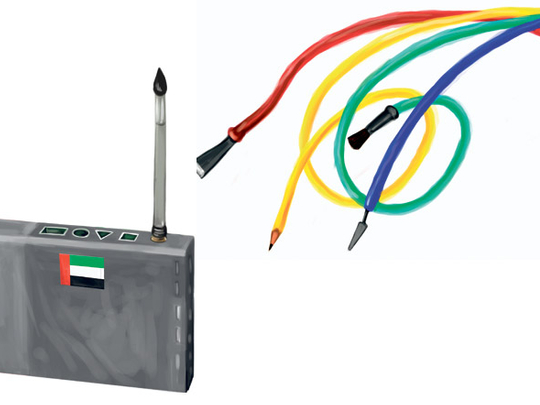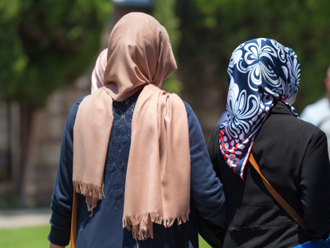
After a week of taking in all the art at Art Dubai and Bastakiya Art Fair, I felt quite invigorated to say the least. Both fairs were extraordinary — one very up-market with visitors dressed to the nines strutting their latest Manolo Blahniks, seen analysing Kader Attia's deafening installation History of a Myth: The Small Dome of the Rock , and the latter boho-chic and relaxed in what it had to offer. It was very refreshing; I felt that many of the pieces of art crossed the line in their subject matter and at the end of the day that is essentially what art is meant to do — leave you pondering, or in extreme cases quite horrified, about a certain message. Despite the critics condemning the fairs' censorship policy, Art Dubai left me asking one significant question: As the city of Dubai moves in this creative and commercial direction, are we really getting it absolutely right?
Art Dubai certainly proves that the world of art and culture in the region has moved from the traditional notion of a gatekeeper ministry approach to private and semi-government institutions moving things forward in a positive manner. This avant-garde fair idea takes a great deal of foresight for a city in this region and yet again Dubai has proven that it has taken the initiative and jumped first onto the bandwagon. Take the Bidoun Lounge Art Park and the Global Art Forum for example — substantially off-beat talks where people interested in the world of art get together very informally to hear international curators, artists and collectors share their views. Over the years they have proved to be stimulating. This shows that Dubai can be a pragmatic art hub of East meets West, where debates occur. After all, we are geographically placed in the middle of both worlds and demographically we qualify as a city with a critical mass of over 180 nationalities living and working together. This all sounds very positive, and coupled with a large amount of wealth owned by many collectors in the region and the many galleries that already exist, Dubai seems to be on an ideal cultural pedestal moving towards the success level of fairs such as Art Basel Miami and Frieze in London. Nevertheless, I believe the city has a great deal to get right before it is close to being dubbed the ‘pragmatic hub' of art in the Middle East.
Firstly, and at the top of my list, is the creation of art-education institutions that cultivate and incubate creative young minds. On the periphery, Dubai does have some good non-profit organisations — such as Dubai Community Theatre and Arts Centre — which continuously feed the minds of young people and adults in the fields of art, drama and music. However, my interest lies in the educational institutions of a higher level such as universities that teach the fine arts. Once this happens, we will see the emergence of many talented Emirati artists who would look up to and learn from legends of the previous generation such as Najat Makki and Abdul Qader Al Rais, and see them entering into international auctions such as Christie's and Bonham's as their predecessors did.
Public art
Secondly, I would like to see the development of art in public spaces. Aren't urban developments meant to be where people learn to appreciate the meaning behind creative installations and sculptures? This has an impact on their understanding of each piece of art that they will ever come across. I am a great believer in art in public spaces — so much so that I feel we need to create a designated committee to this end. In the 1970s we did see an abundance of sculptures, such as falcons and traditional coffee cups, all over the country, but after that not much was created. These creative installations could be placed everywhere, from park benches to main roads, from designs on metro manhole covers to architectural building designs. This is one of the ways that we can inculcate a sense of curiosity and innovation in the minds of our youth.
Last but not least, we need to witness the birth of our very own Middle Eastern Contemporary Art Museum. The wave of visitors at Art Dubai certainly proves that there has been a thirst in the region for something as substantial as this. With prominent collectors such as Sultan Sooud Al Qasimi and artists that exist within the region who have personally told me they would fully endorse the idea by donating some of their top pieces, I am absolutely sure that we can put together an impressive museum that would attract the mobile population of the UAE and many people from all over the worldwho visit.
For argument's sake, let us go back to the original question. Is Dubai the pragmatic art hub of the Middle East? Perhaps not at the moment, but it is certainly on its way there. We just need to inject some of the above to get there a bit faster.
Muna Al Gurg is a director at the Easa Saleh Al Gurg Group and vice chairperson of the Young Arab Leaders.









